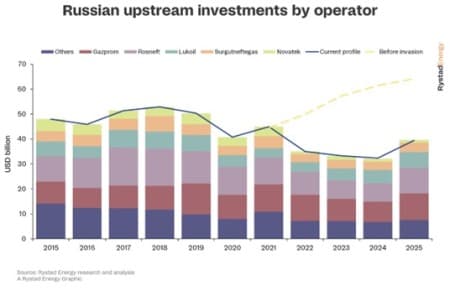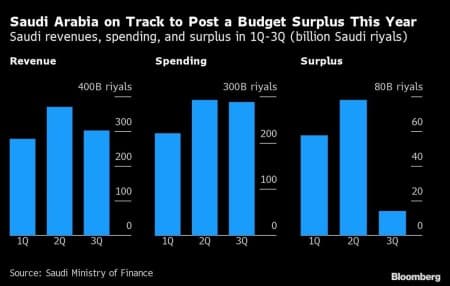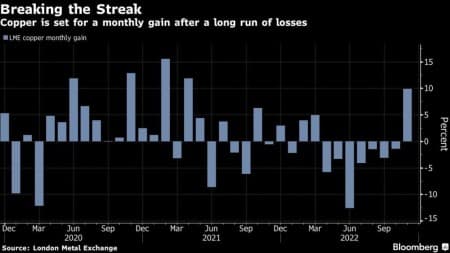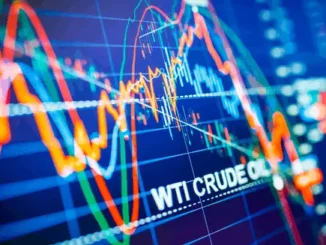
1. Oil Analysts Diverge Ahead of OPEC Meeting

– OPEC+ will meet this Sunday to discuss its production targets for January 2023, amidst a widening discrepancy between oil market watchers as to what we should be expecting next year.
– As things stand currently, it is only the US Department of Energy’s EIA that sees OPEC+ pumping more oil in H1 2023, others indicate the oil group should either keep targets as they are or cut further.
– With outright prices bouncing back from the lowest levels seen this year and even WTI swinging back above $80 per barrel, the current consensus is that OPEC+ will roll over its targets.
– Confirming that forecasts have become inherently political, the IEA’s global oil demand growth for 2023 stands at a mere 1.7 million b/d whilst OPEC expects 2.55 million b/d.
2. Ukraine War to Shrink Russian Upstream Investment

– After Russian oil companies invested $45 billion into upstream projects across the country last year, this year is poised to see the lowest investment activity in years as companies postpone FIDs.
– Greenfield investments have tumbled 40% year-on-year to $8 billion, and even that is mostly coming from previous commitments such as gas production going into Power of Siberia-1 or Vostok Oil.
– Russia’s two largest energy companies, the oil giant Rosneft and the gas giant Gazprom, have seen marginal declines in capital spending this year, coming in at $12.9 billion and $10.4 billion, respectively.
– At the same time, future LNG projects such as Novatek’s Arctic LNG-2 might be delayed for five to six years longer than previously assumed due to a lack of liquefaction technologies.
3. Europe Confronts First Cold Spell

– Following an unseasonably warm autumn, Europe is now bracing for colder-than-average temperatures in December as a double-blocking pattern in the Arctic will bring weeks of chill.
– Scandinavia, Northern, and Western Europe will be the most impacted regions, marking the first real test of European gas inventories this winter, with stocks still around 94% full.
– Power prices in Scandinavian countries were the first to react, with the Nordic daily rate surging 8% in just one day to almost €375 per MWh, the highest since September.
– European spot gas prices have seen some strengthening earlier this week, although they remain on par with month-ago readings, trending around €140 per MWh.
4. Lack of Dual-Use Units Limits Gas Switching

– As the coming Arctic wave is pushing natural gas prices in Europe up again, the continent’s industry at large has hit the limits of gas-to-oil switching that could allow the generation of power from diesel or fuel oil.
– According to the IEA, gas-to-oil switching in Europe might rise to 450,000 b/d in Q4 2022 and Q1 2023, double of what it used to be a year ago when gas prices were four times cheaper.
– The switching capacity of the European industry is assessed at a mere 2-3% of installed capacity or around 2 GW, with most of it located in Italy, Germany, and Spain.
– Fuel oil used to be a huge source of power generation in the early 2000s with some 1 million b/d of installed capacity, but now those volumes have shrunk sixfold to 150,000 b/d.
5. China’s Decarbonization Is Around the Corner

– According to Rystad Energy, China is developing more renewable energy capacity than any other country in the world to fulfill its pledge of becoming carbon-neutral by 2060.
– China’s power generation is still dominated by coal, accounting for some 58% of all electricity and totaling 1,115 GW in capacity, but non-emitting energies have been making huge inroads.
– Current developments suggest China will ramp up its solar PV and wind capacity to almost 2,000 GW by 2030, tripling it over the course of the upcoming seven years as the LCOE of a solar plant dropped below $50 per MWh.
– China’s share in the manufacturing of solar panels stands around 85%, implying the sourcing of wafers and polysilicon will be domestic, buoying relevant industries as well.
6. Despite Headwinds, Saudi Arabia Is the Real Winner of 2022

– Saudi Arabia is expected to post a budget surplus of $25 billion this year, the first in more than a decade, fuelled by a robust 8% increase in the Middle Eastern kingdom’s real GDP.
– Boosted by higher production from Saudi Aramco and elevated oil prices for most of this year, the ramp-up in fiscal spending now will push the budget breakeven lower next year, to $76 per barrel.
– Despite the bountiful windfall, Riyadh has many unforeseen issues it must settle, such as the country’s sudden bank liquidity issue as the interbank offered rate (Saibor) soared to 6% recently.
– This has prompted the Saudi central bank to intervene, seeking to cool down the aggressive loan expansion amidst the country’s rapid economic growth.
7. Copper Strength Is Back

– Amidst widespread Chinese protests and China’s purchasing managers index (PMI) coming in at the lowest reading since March 2022, copper prices continue their spectacular surge.
– The three-month LME copper contract moved to 8,220 per metric ton this week, setting it on track to soar 10% in November, the first monthly gain in eight months and the biggest since April 2021.
– Most of the positive momentum for copper has been coming from shifting expectations in Chinese growth, with the market seeing the protests as paving the way for further Covid easing.
– China is the largest consumer of copper globally and still relies on imports for 25% of its needs, prompting new calls from Chinese miners to launch new rounds of ore prospecting in the country.



